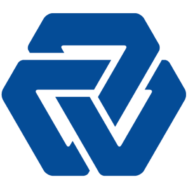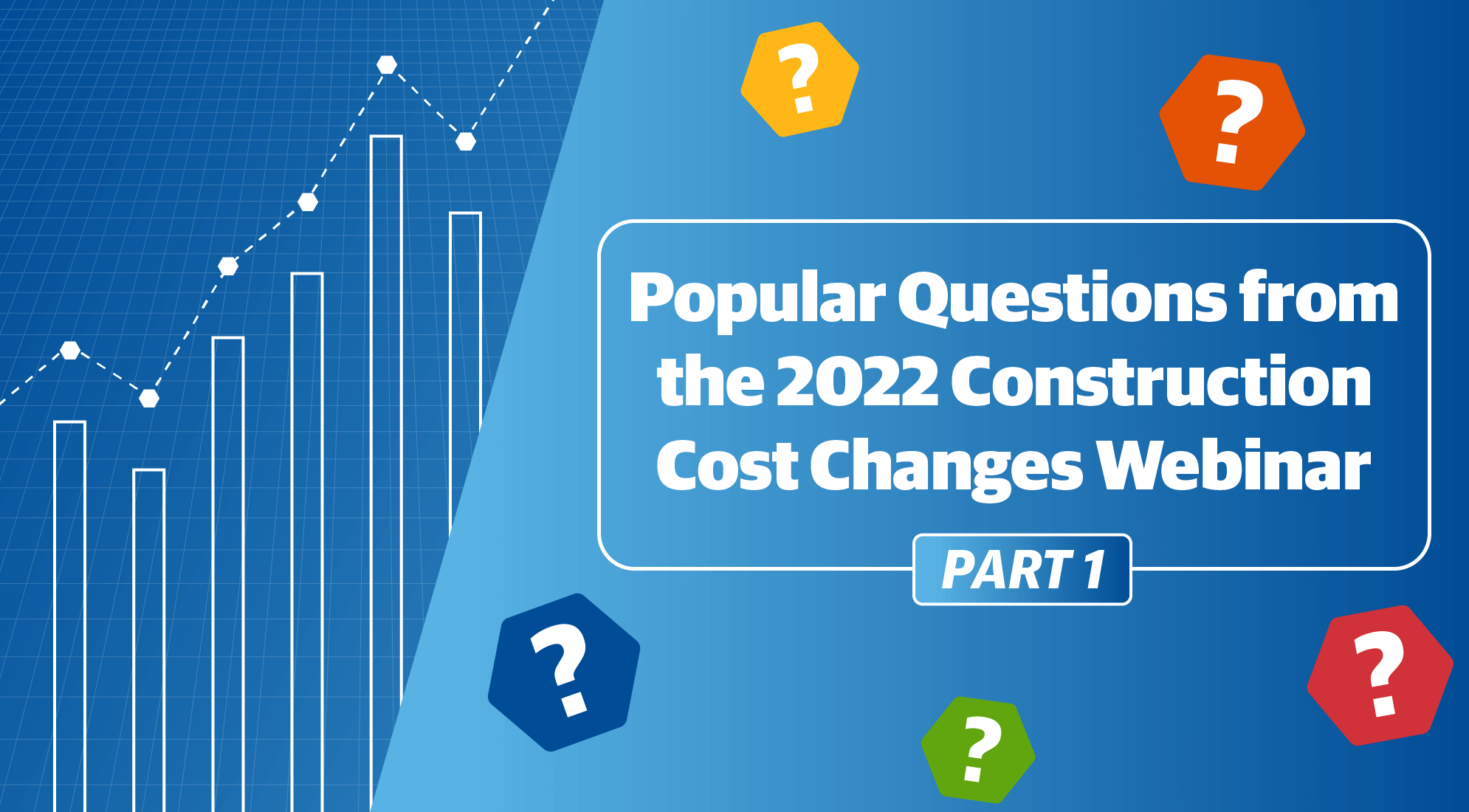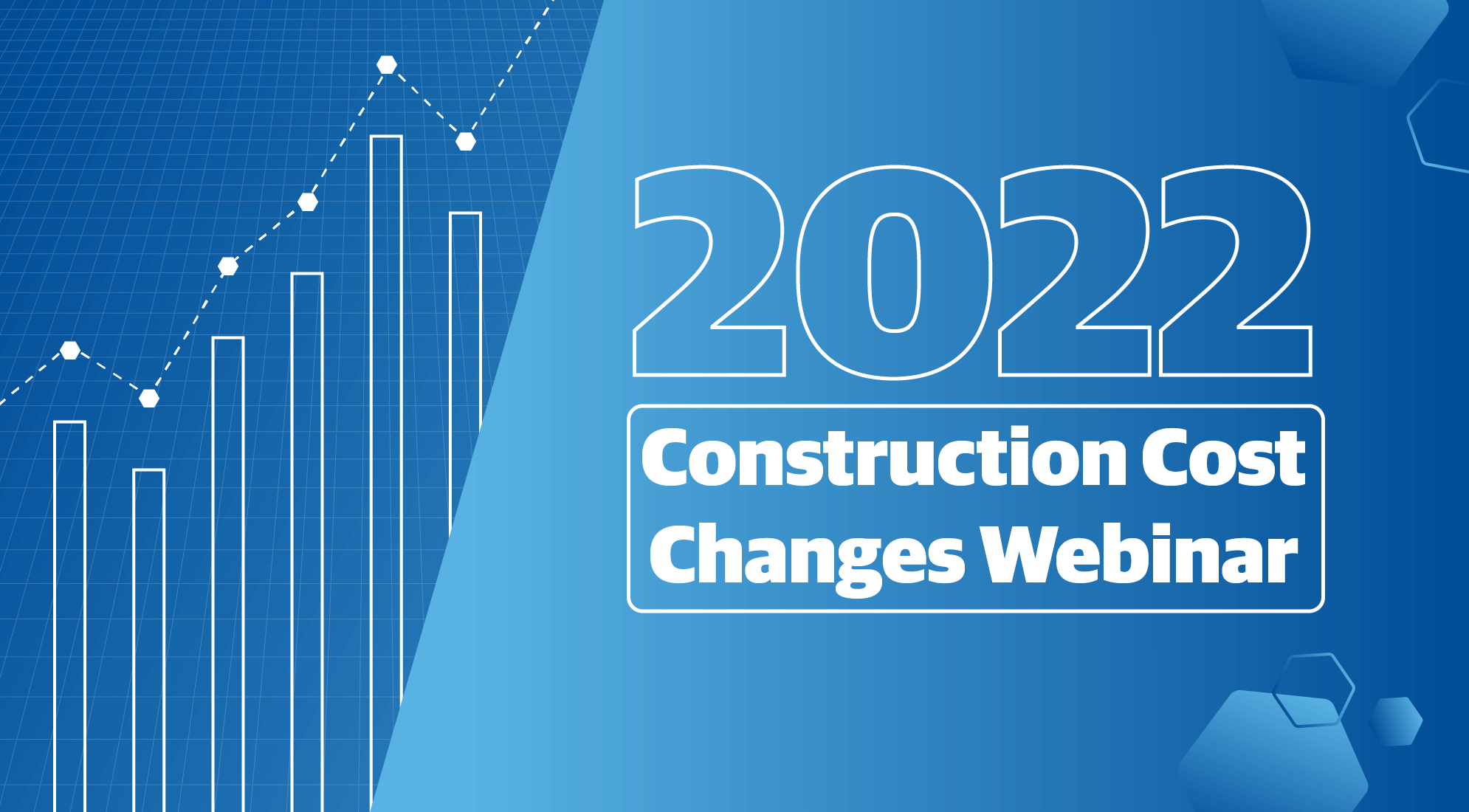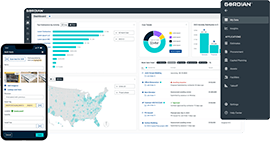FAQs from the 2022 Construction Cost Changes Webinar, Part 2
Every January, members of our expert data team present updates to the RSMeans dataset to construction industry professionals via our Construction Cost Changes Webinar. And each year, amid the discussion of material cost changes and market analysis, we receive hundreds of written questions from attendees.
While we do our best to answer as many of these questions as possible in the live discussion, there are inevitably too many submissions to address during the live presentation. So we’ve gather some of the most frequently asked questions for the live session and asked our presenters to answer them here.
We previously published seven FAQs with answers, which you can find here. As for today, here are six more FAQs from the 2022 Construction Cost Changes Webinar:
1. Is the supply chain looking better than last year? Are there any lingering cost impacts from supply chain issues?
Over the past two years, the construction industry has experienced the most widespread supply chain shortages in memorable history. Some of the more impactful challenges presented by the pandemic through that time were material and equipment shortages stemming from issues in manufacturing and distribution.
Unfortunately, I have not heard that the supply chain is significantly better this year as compared to the last two, which means we will likely continue to see cost increases from ongoing challenges. I have read that it may take upwards of two years for the supply chain to recover and return to normal operation. Whether that means two years from the peak of the pandemic or two years from its end remains to be seen.
2. How are rising fuel costs impacting the material and equipment prices?
Rising fuel costs show their impact in a variety of ways across construction projects. Where materials are concerned, any petroleum-based materials (like thermoplastics) will see increased prices. Additionally, transportation/delivery surcharges will increase the marginal cost of material usage as fuel costs increase. On the equipment side, increased fuel prices drive up hourly equipment costs through increases to both transportation/delivery charges and operating costs.
3. Some common construction materials are still experiencing price spikes. Can RSMeans data help me find comparable alternatives to those materials?
RSMeans Data Online doesn’t automatically find or recommend alternative material choices – finding comparable alternatives is really the role for the architect, engineer, owner and contractor. However, when discussions about alternative materials or value engineering are being held, RSMeans data products will provide cost information to allow for a better-informed decision.
One particular area of interest for owners or designers may be the use of green construction materials as an alternative to traditional construction materials. In that case, RSMeans data has a green construction dataset available in both cost books and RSMeans Data Online. Green materials in RSMeans Data Online can be identified by a green leaf next to the line item description.
4. I don’t see a material that I use often in the RSMeans database, is there a way to request a new material or create my own line item for it?
If there’s a commonly used material that you can’t find in RSMeans data, please contact our Customer Service team with the item information. They’ll pass your request along to our data engineers, who will then research the material, labor and equipment costs associated with it. If our data team determines the material is appropriate and applicable to the construction industry at large, it will be added to the RSMeans database.
In the meantime, our CostWorks CDs and RSMeans Data Online platform both have a procedure for creating custom line items. By creating a custom item, you can enter the description and price of a particular task or material and have it on hand for any future estimates you create. If you haven’t created a custom line item before, our Customer Success team can show you how to perform that procedure.
5. I’ve heard that some people are adding contingency clauses into their estimates to account for the fluctuating market. Have you seen that, too?
Yes, and this is recommended practice, as contingencies are intended to account for the unknown. This is especially helpful if the design is not complete. In such a case, the unknown is in the project design, and a contingency is an appropriate control. From the owner’s standpoint, if the unknown is in the fluctuating market, then a contingency is a safety net.
Looking at it from the contractor’s standpoint, however, contingencies can present a risk of losing the work to a lower bidder. Because market fluctuations can go both ways, a contingency could be a detriment to contractors.
6. Is it advisable to add a percentage mark-up to the total estimate cost to try and capture some level of fluctuation of materials between when the estimate is created and when the work actually happens?
Yes. Estimators call this estimating to the mid-point of construction. This is a good practice prior to actual bidding. But once the project has gone out to bid, it is a risk. Increasing the bid cost can often lead to losing the work to a lower bidder.







